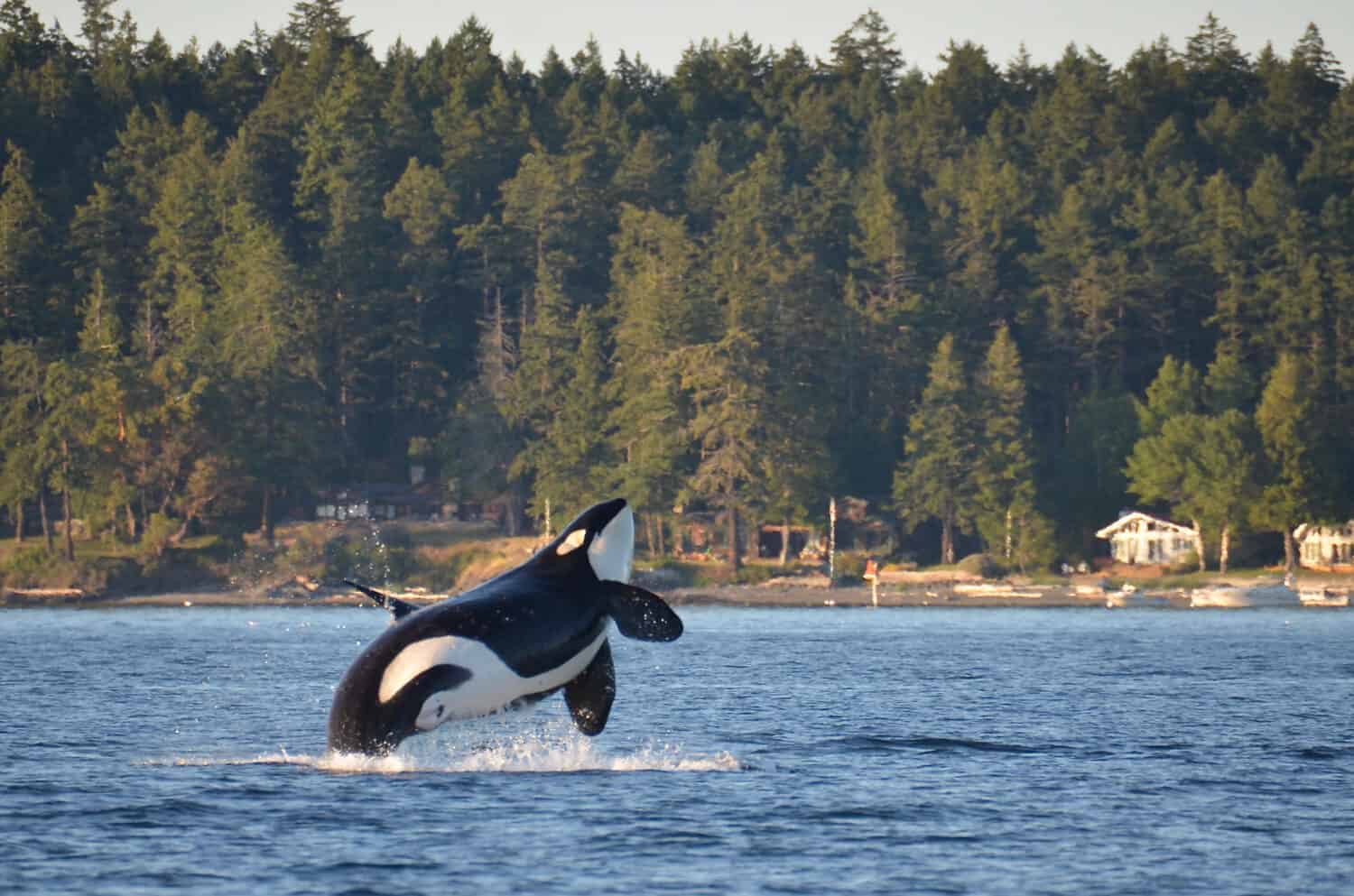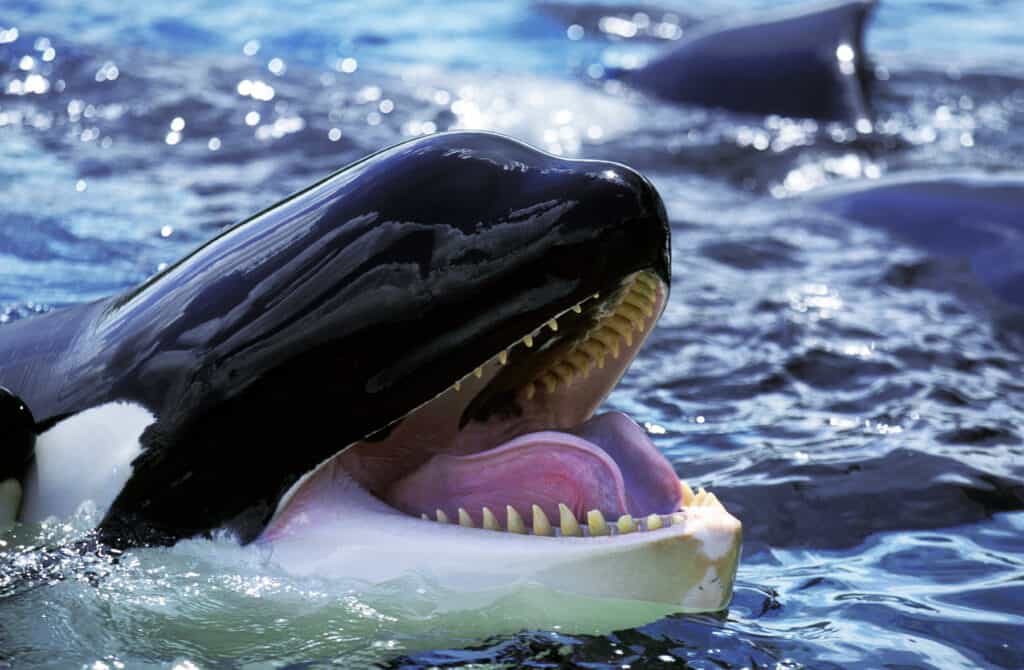Continue reading for our analysis...

You may think that dolphins are super cute sea creatures to view from the shore and boats but, for killer whales, they are food! That makes them a legitimate hunting target. This dolphin found out the hard way just how ruthless killer whales (orcas) can be. Don’t miss this dolphin being hurled into the air by the skillful hunter.
Killer Whale Head Butts Dolphin
The short YouTube clip of the attack is at the top of this blog post. It captures the exact moment of the attack, slowing it down so that we can appreciate the power and accuracy of the orca’s strike on the dolphin. It was shared by Domenic Biagini on his Dolphin Drone Dom channel and has already received over 47,000 likes. Domenic uses the channel to share footage of “Whale Watching Tours, Wildlife Photography, and Ocean Fun”.
Dolphin Overpowered by Attack from Below
The above footage shows a killer whale (orca) attack on a dolphin. According to the Whales and Dolphins Conservation charity, killer whales and dolphins are actually members of the same family. They are two of the most recognizable species in our oceans.
Killer whales are described as generalist eaters – they eat several different types of fish as well as seals and sea lions. As you can see in the above clip, they hunt dolphins and porpoises. Some will even attack sea birds. A group of killer whales is called a pod, and it is common to see pods that focus on just one or two types of prey. They become experts at catching them.
Are Killer Whales under Threat?

Some killer whale populations are under threat.
©slowmotiongli/Shutterstock.com
The US National Oceanic and Atmospheric Administration Fisheries explains that some killer whale populations are endangered. The US Southern Resident killer whales are one such population. Their range extends from central California to southeast Alaska.
The threats faced by killer whales include entanglement – they get caught up in fishing gear. They get so caught up that they cannot swim or hunt and may die from injuries. Killer whales also face a lack of food because of over-fishing. When creatures like this do not get enough food, they are less likely to reproduce and die at a younger age. This reduces their population numbers further.
Unfortunately, killer whales are also adversely affected by the pollution that we release into the oceans. This can be anything ranging from wastewater treatment plants to pesticides. Oil spills also have a large impact on their health.
Several initiatives are underway to protect their populations. This includes minimizing harassment, preventing oil spills, and protecting fish stocks and habitats.
Thank you for reading! Have some feedback for us? Contact the AZ Animals editorial team.






